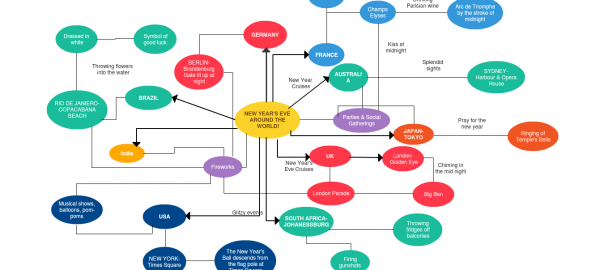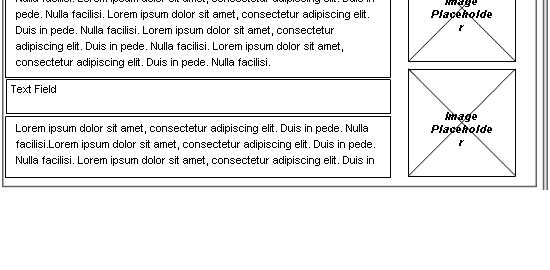With the number of people who work remotely at least once per week, having grown by 400% since 2010, chances are that you manage at least one employee who works outside the office or works from home.
And due to the global COVID-19 pandemic, you might have ended up with managing a completely remote team. Perhaps you are even looking at managing them remotely for the rest of the year.
While managing a remote team is different from managing a team that is co-located, it’s not worlds apart. Basically, you are following the same practices, but slightly differently. In this post, we’ll be sharing some best remote team management tips the Creately management team uses themselves and recommends.
Let’s dig in.
Communicate and Engage Regularly with the Team

One of the things that are different between managing a remote team and a co-located team is the way you engage and communicate with them. In an office, you frequently talk to your team; during meetings, casually as you walk past them, in-person discussions, etc.
The only way to maintain this level of communication and engagement with a remote team is by using the right communication tools. Slack, Zoom, Skype, Google Meet, Basecamp, etc. are some of the popular tools used by remote teams for communication. And you can use multiple platforms to conduct effective communication.
Just as important as using the right tool is having guidelines to adhere to when using them.
- Switch to video conferencing whenever possible. It’s the closest thing to face-to-face communication when you are working remotely. Plus video helps build a stronger bond with the employee.
- Use instant messaging for urgent messages.
- Always schedule your meetings in advance, allowing the employee/s to get ready and to allocate time from their own schedule.
- Do regular check-in with individual team members in addition to team meetings.
Trust Your Team

Always trust your employees to get the work done, whether you are working from the same building or remotely. Offer support where necessary, but allow your employees the freedom to carry out the work at their own pace without succumbing to micromanaging.
To build trust between you and your employees, you can encourage the practices of a few things,
- Always lend an ear, whether your employees are seeking solutions for a personal or professional problem.
- Set up remote working/ work from home guidelines that everyone should adhere to. For example, everyone should generally be available online from 10 a.m to 4 p.m.
- Make sure everyone, including yourself, always updates the status of availability in the chat platform you use. Stepping out to run an errand? Let the others in the team know with a quick message.
- Share task updates in the chat platform as well. You can start the day by sharing what you will be working on. At the end of the day, mention what you were able to get done.
- Encourage everyone to have work-related issues in the team channel. This will allow relevant people to share their opinion to arrive at a solution as well.
- Overcommunicate. Compensate for not being there in-person by sharing everything, from task updates to leaves you have applied for next month. Whenever you are concerned about something, explain what exactly you want to know using every word you have to type. If it makes things easier, switch to video so you can observe how they react as well.
Set Clear Expectations
This is also directly linked to building trust with your team. When working remotely, it’s easy to feel confused about where to focus. This is why it’s important to set expectations in order to create clarity and increase engagement.
Each employee has a role to play; accordingly set goals each one should accomplish along with deadlines that should be met. To simplify things, use task management tools like Favro, Asana or Trello, where you can break down projects into smaller tasks and monitor the progress closely.
Focus on the Challenges and Concerns of Employees
Ensure to everyone that you support and care for them. Attentively look into any issues that are affecting the performance or the personal life of the employees as you engage with them through direct conversations or indirect observations. Be considerate when discussing sensitive matters and offer your help and guidance.
Invest in Reliable Collaboration Tools
Whether it is to schedule meetings, an online whiteboard for online brainstorming sessions, document sharing, etc. have a proper tool that will make it easier to get things done when working remotely. They will facilitate seamless collaboration between remote employees.
Some of the collaboration tools you can use are;
Google Drive – makes it easy to organize and manage access to files and documents created by the team
Creately – serves as an online whiteboard/ canvas tool where teams can collaborate on ideas using diagrams, visuals, and text. It also allows you to connect with other team members via in-app video conferencing.
Slack – a widely used communication platform that allows you to stay connected with your team via video conferencing, audio calls, and instant messaging.
Favro – allows the team to plan and track their project activities collaboratively.
More tools;
5 Powerful Collaboration Tools for Working from Home Teams
Tools for Working from Home Teams
Recognize Good Employee Performance

Being recognized for their performance is a key driver to increase employee productivity and motivation.
While it’s important to track their progress as a remote team manager, recognize it when they have performed well. It doesn’t have to include monetary compensation, simply acknowledging them publicly or with a token of appreciation in the form of a personal email or a direct message will generate just the same result.
Lead with Empathy
When not seeing each other face-to-face, you often tend to jump into assumptions. Maybe you didn’t like the way someone communicated a message to you, but without jumping into a negative conclusion, check again. Share your feedback with them kindly and let them know how you felt and how things should be handled in the future.
And lead by example. Do what you expect others to do and guide them along the way.
Got More Remote Team Management Tips?
If your entire team has suddenly gone remote due to the COVID-19 pandemic, you might have come across many challenges. We hope these remote team management tips will help you find easy solutions.
We also have a free practical guide for working from home teams, and it covers everything from how to stay organized as a remote team to conducting remote interviews. Do check it out for more handy tips on managing your remote team.




